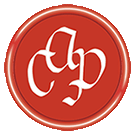Speaker
Mr
Paul Smith
(University of Saskatchewan)
Description
The existence of unexpected states (states not predicted by the conventional quark model) in heavy Quarkonia, specifically Charmonium and Bottomonium like states, is of great interest to modern particle physics. States like X(3872), \(Y_{b}\)(10890), \(Z^{\pm}_{b}\)(10610), and \(Z^{\pm}_{b}\)(10650) have proven difficult to reconcile with the conventional quark model. However, analysis of diquark constituent masses has pointed towards tetraquark configurations being responsible for many of these exotic states.
Thus far, the diquark correlations required for a tetraquark configuration of X(3872) have been primarily examined through the use of diquark correlation functions where the Schwinger string is introduced to ensure the gauge invariance of the diquark correlator. Here, research is presented on the use of dressed fields for diquark currents. Results for doubly light, light-heavy, and doubly heavy diquark systems have been obtained, and all results have shown this dressed field method to be an effective means of extracting gauge invariant results from diquark correlation functions.
Primary author
Mr
Paul Smith
(University of Saskatchewan)
Co-author
Tom Steele
(U of Saskatchewan)
